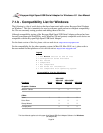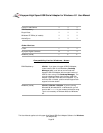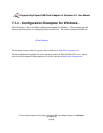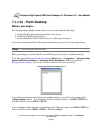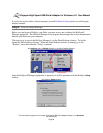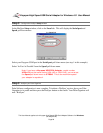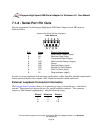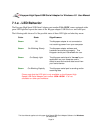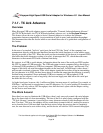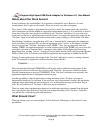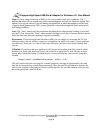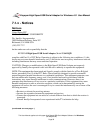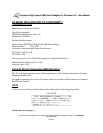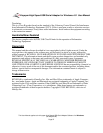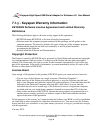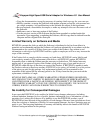
7.1.f - TX Ack Advance
Overview
Many Keyspan USB serial adapters support configurable "Transmit Acknowledgment Advance"
(aka TX-ACK threshold, aka TX-ACK(nowledgement) advance, etc.) in the
Keyspan Manager.
This feature allows the user to adjust a device's transmit behavior to achieve the optimum
compromise between compatibility (exact emulation of built-in ports) and maximum throughput.
This document describes the factors which a user should be aware of to guide their configuration of
this feature.
The Problem
In the case of a standard, "built-in" serial port, the host CPU (the "brain" of the computer) can
communicate directly with the serial hardware because the (serial) hardware is in the address space
directly accessible to the CPU. When the serial port has transmitted all the data in its transmit FIFO
(the buffer that holds characters waiting to be sent), it interrupts the CPU, which then adds more
characters to the transmit FIFO with a minimal time delay.
By contrast, in a USB to serial adapter, information about the state of the serial port FIFO reaches
the CPU by means of USB messages. The USB subsystem in most computers delays the delivery
of inbound (USB peripheral to USB host computer) USB messages by about 1 millisecond. The
impact of this delay on serial throughput depends on the baud rate. At 9600 baud, it takes about 1
millisecond to transmit a character. If the serial adapter signals the host when it begins transmitting
the last character in its FIFO, the host learns about it at about the same time the character is actually
finished being transmitted. Since ou
tbound (USB host computer to USB peripheral) USB
messages are not subject to such a long delay, the host can supply new data before the serial port
has been idle for too long.
At higher baud rates, however, this 1-millisecond delay becomes more of a problem. For example, at
920 Kbps, 1 millisecond is enough time to send 92 characters. So, if you're sending 92 characters at
a time, you will only achieve 50% throughput, since half the time is spent with the adapter waiting
for the host to send more data.
The Work Around
Since there's no way to eliminate the USB delays, there's only one work around: the serial adapter
has to lie about when it's done transmitting. The size of the lie is what's being configured with the
"TX Ack Advance" parameter: it specifies how many characters ahead of time the adapter tells the
host "I'm done." This way, the adapter still has some data to transmit while it's waiting for more to
arrive from the host. If the next data from the host arrives before the previous data is completely
sent, the new data can be sent with no delay, and the device will achieve 100% transmit throughput.
Keyspan:High Speed USB Serial Adapter for Windows-v3.1 User Manual
This User Manual applies to the Keyspan High Speed USB Serial Adapter Software for
Windows
.
(rev 02apr24JA)
Page 32



